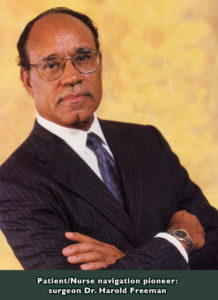In January 2009, the Maricopa Integrated Health System (MIHS) staged the grand opening of the Refugee Women’s Health Clinic in Phoenix, Arizona with Dr. Crista Johnson, MD, FACOG as the founding medical director. It is believed to be the only such clinic in the U.S. specializing in obstetrics and gynecology for refugee women from Africa, Asia and the Middle East.
 “What was striking,” said Dr. Johnson, “was the language, the cultural barriers and the stress the women experienced when they would come to the hospital. The clinic will be an oasis to the community because there will be trained staff, knowledgeable regarding care services, resources, and specialized information who understand the patients better, and are able to facilitate a positive patient experience during their hospital contact and even in their homes.”
“What was striking,” said Dr. Johnson, “was the language, the cultural barriers and the stress the women experienced when they would come to the hospital. The clinic will be an oasis to the community because there will be trained staff, knowledgeable regarding care services, resources, and specialized information who understand the patients better, and are able to facilitate a positive patient experience during their hospital contact and even in their homes.”
“These people,” Dr. Johnson continued, “are called navigators and they include nurses, public health workers, lay workers and others who would serve as a resource guiding, interpreting, communicating, facilitating and helping the refugees through the often times complicated and unfamiliar processes in obtaining satisfactory health care services.”
In the case of the refugee, who most know very little about seeing a doctor, or receiving clinical treatment, or home care of any sort and are also totally lacking in exposure to allied health services. But the engagement of navigators to improve certain service outcomes, and ultimately access to services, added a dimension that has made the service provider a key contributor to the improvement of patient satisfaction.
Duke Health in 2011 launched a robust and credible initiative using a class of employees as navigators who would serve as a resource to patients who because of cultural, economic, historical life experiences, or other reasons needed assistance in facilitating their engagement with the healthcare provider.
“The mission of the intervention,” said Dr. Angelo Moore, PhD, Assistant Director and Program Manager for Community Outreach, Engagement, and Equity (COEE) with Duke Cancer Institute, “was to be part of a highly visible community overall strategy to achieve care delivery that was equitable, culturally appropriate, and timely. The desired result would contribute to improved community health, higher performance outcomes and patient satisfaction.” The mechanism that would be employed is referred to as patient navigation. This is a concept and a process first introduced in 1990 by Dr. Harold Freeman a surgeon who saw the need for a resource for his cancer patients in Harlem Hospital, New York and who were predominantly African American women.
 Dr. Freeman, who now oversees the operations of the Harold P. Freeman Patient Navigation Institute in New York, describes navigation as an individual intervention to help overcome barriers due to systemic reasons. “Patient navigation is what a person does,” says Dr. Freeman. However, the type of patient navigation that is employed is based on the education, skill set, scope and who is being served. In the market-place, and since the launching of the concept, several different titles have emerged such as Nurse Navigator, Resource Navigator, Community-Facing Navigator, Clinical Navigator, Non-Clinical Navigator, Lay Navigator. There is now an ongoing effort to harmonize these titles around a common set of descriptors common to the role and purpose of navigation.
Dr. Freeman, who now oversees the operations of the Harold P. Freeman Patient Navigation Institute in New York, describes navigation as an individual intervention to help overcome barriers due to systemic reasons. “Patient navigation is what a person does,” says Dr. Freeman. However, the type of patient navigation that is employed is based on the education, skill set, scope and who is being served. In the market-place, and since the launching of the concept, several different titles have emerged such as Nurse Navigator, Resource Navigator, Community-Facing Navigator, Clinical Navigator, Non-Clinical Navigator, Lay Navigator. There is now an ongoing effort to harmonize these titles around a common set of descriptors common to the role and purpose of navigation.
Foundational to the role and purpose of navigation is the elimination of barriers or impediments.
What types of impediments are these? Examples of some of the frequently encountered barriers that may be eliminated through patient navigation: Financial barriers (including uninsured and under insured); communication barriers (such as lack of understanding, language and/or cultural competency), medical system barriers (fragmented medical system, missed appointments, lost results); psychological barriers (such as fear and distrust); other barriers (such as transportation and need for childcare).
Dr Freeman’s interest and desire to tackle the high percentage of African American women who were referred to him for diagnosis and treatment, was peaked when he saw that they were in the third and fourth stages of the disease of cancer. He took note that these women were also poor economically and lived very marginal lives, the circumstances that would impact their access to care. Dr. Freeman knew from available data that white women had a lower cancer morbidity rate. He decided to conduct an investigative approach to identify, if possible, the root causes of this phenomenon.
One of the core derivatives of his work was the description assigned to the title “patient navigator.” A patient navigator is a healthcare professional who proactively guides patients through the healthcare process. They are responsible for ensuring that the healthcare provider’s system met the needs of the patient as best as possible. To that end, patient navigators spend their time communicating with patients and their families and as an interface between the patient and the provider. They engage patients by describing the relevant options, the true nature of their illness, what to expect during the treatment process, and what their recovery process will be like. They may also need to identify what are the patient’s legal rights.
It’s important that patient navigators once able to convey the specific impediments that stand in the way of effective treatment, go in pursuit of remedies to overcome the obstacles that they may encounter while pursuing treatment. This means that employees in this role need to be highly knowledgeable of healthcare systems and what can be done to ensure the patient is provided the best possible care. Attributes of compassion, positiveness, trust-building and coaching skills are key to success as a navigator.
To do well in this role, it’s critical that the employee be able to answer patients’ questions as they arise. This means that navigators must have a strong understanding of healthcare systems and how they function. They should also be a compassionate, positive individual who is capable of inspiring confidence in the patients served.
Ultimately the impact of the work of patient navigation is embedded in the social determinants of care. This addresses the social, cultural, environmental, and economic conditions in society that impact upon health. In this regard, colleagues compile and disseminate evidence on what works to address these determinants, build capacities and advocate for accelerated action.
- How do Patient Navigators Contribute to Equitable, Quality and Culturally Appropriate Health Care? - June 22, 2022
- The School Nurse—Fully Engaged in Community Health - April 17, 2020
- Are We “Poaching” Jamaican Nurses? - August 3, 2017



